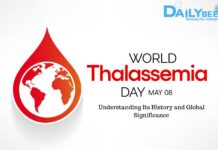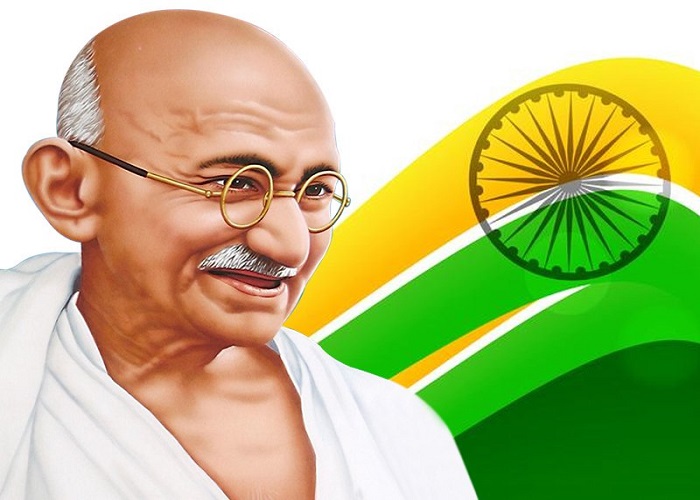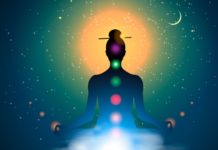Gandhi Jayanti is observed every year on October 2 to mark the birth anniversary of Mohandas Karamchand Gandhi, also known as Mahatma Gandhi. Gandhi Ji was the practitioner of Satya (truth) and Ahinsa (Non-Violence). His method of non-violence inspired many civil rights movements across the world. The UN General Assembly announced on 15 June 2007 that it adopted a resolution that declared that 2 October will be celebrated as the International Day of Non-Violence as he was a non-violent freedom fighter. He is also known as the “Father of The Nation” and this title was given to him by Netaji Subhash Chandra Bose for his leadership of India’s freedom movement along with other national leaders to free India from British rule.
History & Life Journey of Ma hatma Gandhi
Mahatma Gandhi was born on 2nd October 1869, in Porbandar city of Gujrat. His father, Karamchand Gandhi, served as the diwan of chief minister of Porbandar, which was ruled by the British. Putlibai, who was a devout woman, was her mother. His childhood was heavily influenced by Jainism and Vaishnavism. As a result, he practiced ahimsa, vegetarianism, self-purification fasting, and tolerance of followers of other faiths and creeds. He also learned a great deal about the value of truth from the tales of Shravana and Harishchandra.
He finished college, earned a law degree from London, and then moved to South Africa to continue his legal career. Indians in South Africa were treated badly because of their dark complexion. He contributed to the cause and worked to make things better for Indians.
Later he returned to India and joined the Indian National Congress. He then began a number of initiatives to liberate India from the British, who were in charge at the time. Gandhi visited many regions of India to inspire the public and lead the resistance to British tyranny. He established an ashram in 1951 in Ahmedabad, the state capital of Gujarat, that was open to people of all castes and religions.
Movements Started by Mahatma Gandhi in India
Champaran Satyagraha of 1917: It was the first Gandhi-inspired Satyagraha campaign and a significant uprising within the Indian Independence Movement. This action signified his commitment to British control.
Khed Satyagrah of 1918: It was intended to aid the Kheda district’s farmers. Due to crop failure and an outbreak of the plague, the residents of Kheda were unable to pay the heavy taxes imposed by the British.
Khilafat Movement Post World War I:
This movement was set up to bring Hindus and Muslims together to stand against the oppressive British and pushed both communities to cooperate. Although he received criticism from several leaders, he was able to win the support of Muslims. All of his efforts, however, were about nothing as the Khilafat Movement quickly came to an end.
Non-cooperation Movement: The Jallianwala Bagh Massacre served as the impetus for this movement, which lasted from 1920 to February 1922 and was intended to use “Ahimsa,” or nonviolent resistance, to oppose British authority in India. The movement was later abandoned in February 1922 as a result of the Chauri Chaura incident, in which locals set cops on fire and burned them to death.
Civil Disobedience Movement: The Civil Disobedience Movement, led by Gandhi, was established after Independence Day was celebrated in 1930. It started with the well-known Dandi March. Gandhi and 78 other ashram members set off on foot from the Sabarmati Ashram in Ahemdabad on March 12 towards Dandi, a hamlet on the western seacoast of India, which was located some 385 kilometers away from Ahemdabad. They arrived at Dandi on April 6th, 1930. Gandhi broke the salt law there. Since salt was a government monopoly, no one was allowed to produce it. Gandhi disobeyed the authorities by taking a pinch of salt that had been created through seawater evaporation. The Civil Disobedience Movement grew across the nation when the salt rule was disobeyed. During the initial stage of the civil disobedience campaign, the making of salt expanded across the nation and came to represent the population’s resistance to the government.
Gandhi-Irwin Pact:
On behalf of Indian National Congress, M.K. Gandhi attended a high-level conference with Lord Irwin to discuss possible constitutional revisions. The pact compelled the British government to give in to several requests, including the removal of all laws and prosecutions, the release of all political prisoners, the restoration of the Satyagrahis’ stolen property, and the right to freely gather or produce salt. The Second Round Table Conference was held in London from September to December 1931 and Gandhi Ji attended this conference on behalf of the Indian National Congress.
Quit India Movement:
Under the direction of Mahatma Gandhi, it was the most vigorous movement the Indian National Congress had ever started. At a meeting held in Bombay on 8 August 1942, All India Congress Committee passed a resolution. The resolution demanded that British influence be ended in India. Once liberated, it said, India will enter the war on the side of nations resisting fascist and imperialist assault with all of her resources.
How is Gandhi Jayanti Celebrated in India?
His commitment to living his life with his beliefs about truth and non-violence is a message for everyone. People light candles in honour of the Father of the Nation on Gandhi Jayanti. President, Prime Minister, and other senior leaders visit Raj Ghat and pay their tribute to Mahatma Gandhi by offering flowers and lighting candles. Schools and colleges host a variety of cultural events and activities to celebrate this day.





































